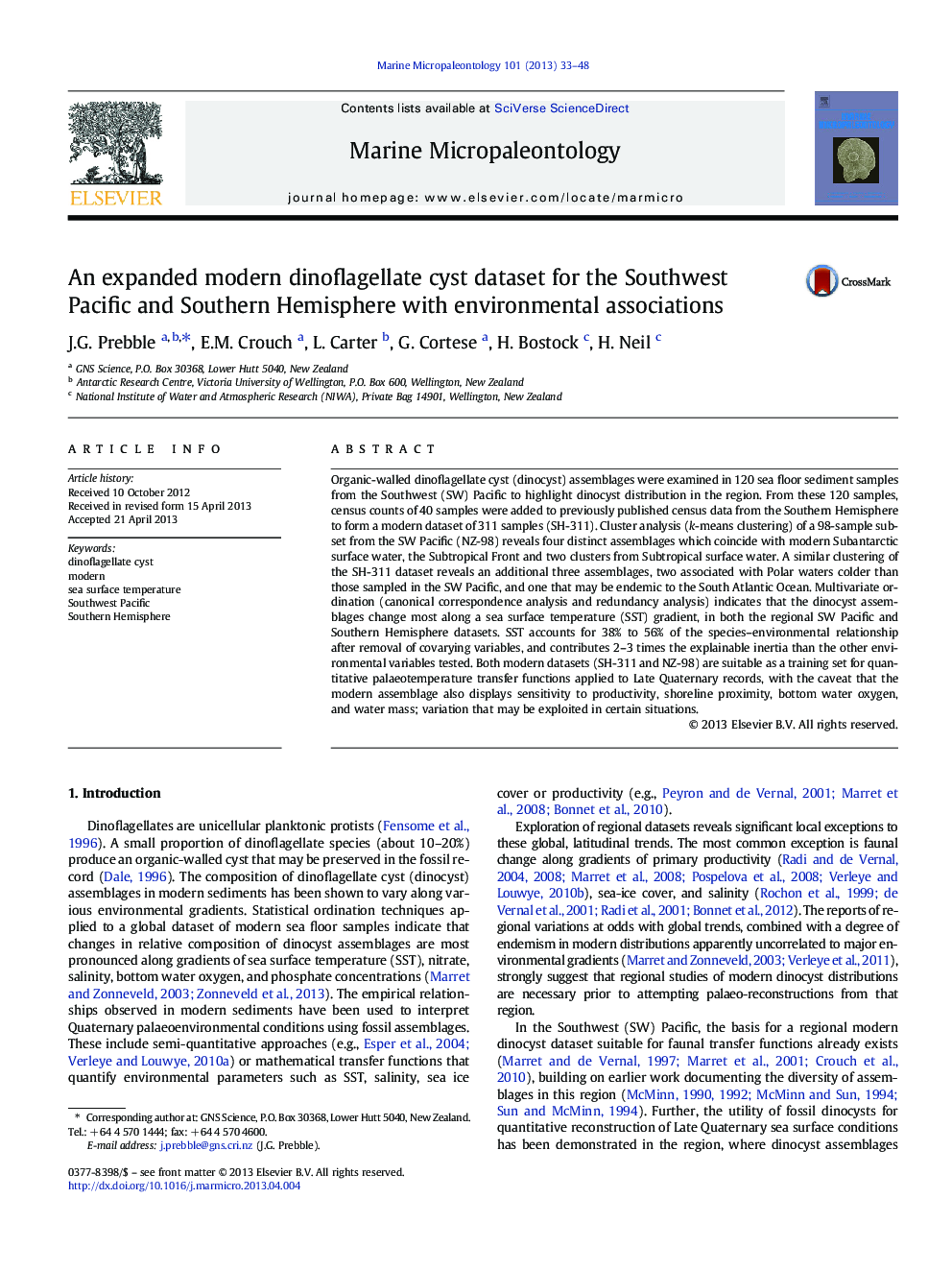| Article ID | Journal | Published Year | Pages | File Type |
|---|---|---|---|---|
| 4748890 | Marine Micropaleontology | 2013 | 16 Pages |
•Dinoflagellate cysts are examined from 120 sea floor samples from SW Pacific.•40 of these samples are included in 311-sample Southern Hemisphere modern dataset.•Cluster analysis reveals distinct assemblages that coincide with water masses.•Ordination shows assemblages change most along a sea surface temperature gradient.
Organic-walled dinoflagellate cyst (dinocyst) assemblages were examined in 120 sea floor sediment samples from the Southwest (SW) Pacific to highlight dinocyst distribution in the region. From these 120 samples, census counts of 40 samples were added to previously published census data from the Southern Hemisphere to form a modern dataset of 311 samples (SH-311). Cluster analysis (k-means clustering) of a 98-sample subset from the SW Pacific (NZ-98) reveals four distinct assemblages which coincide with modern Subantarctic surface water, the Subtropical Front and two clusters from Subtropical surface water. A similar clustering of the SH-311 dataset reveals an additional three assemblages, two associated with Polar waters colder than those sampled in the SW Pacific, and one that may be endemic to the South Atlantic Ocean. Multivariate ordination (canonical correspondence analysis and redundancy analysis) indicates that the dinocyst assemblages change most along a sea surface temperature (SST) gradient, in both the regional SW Pacific and Southern Hemisphere datasets. SST accounts for 38% to 56% of the species–environmental relationship after removal of covarying variables, and contributes 2–3 times the explainable inertia than the other environmental variables tested. Both modern datasets (SH-311 and NZ-98) are suitable as a training set for quantitative palaeotemperature transfer functions applied to Late Quaternary records, with the caveat that the modern assemblage also displays sensitivity to productivity, shoreline proximity, bottom water oxygen, and water mass; variation that may be exploited in certain situations.
